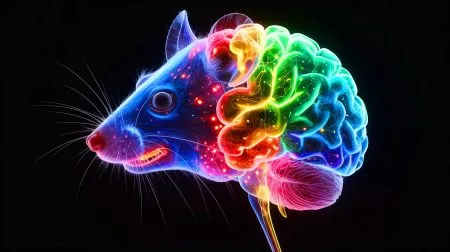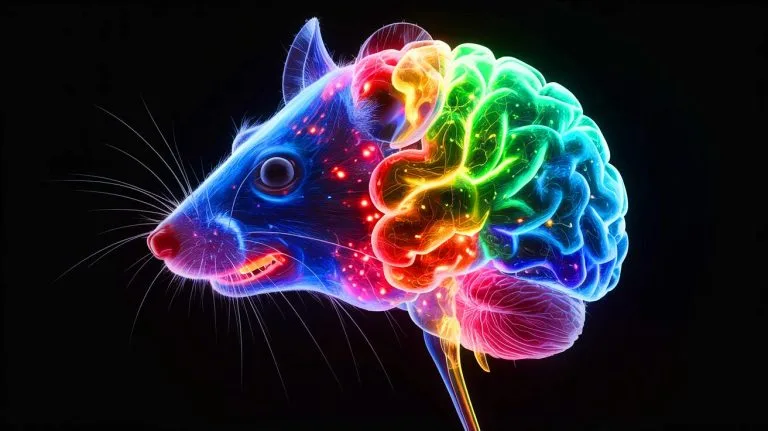| IN A NUTSHELL |
|
In a groundbreaking study, scientists have created an unprecedented map of brain activity, shedding light on the decision-making processes in mammals. This ambitious project, led by the International Brain Laboratory, has resulted in the most detailed mapping of neuronal activity across the entire brain of mice. By examining individual neurons during decision-making tasks, researchers discovered that multiple brain areas coordinate in a non-hierarchical manner to facilitate decisions. This revelation challenges long-held assumptions about the brain’s decision-making processes and opens new avenues for understanding complex behaviors and cognitive functions.
A Comprehensive Map of Neuronal Activity
Researchers have achieved a historic milestone by mapping the activity of over 650,000 neurons in the mouse brain. This comprehensive map offers unrivaled spatial and temporal resolution, allowing scientists to observe the intricate processes that underlie decision-making. The project, which involved collaboration between neuroscience laboratories in Europe and the United States, mirrors the collaborative efforts seen in projects like CERN and the Human Genome Project.
In this study, scientists recorded neural activity from mice across 12 laboratories while the rodents performed decision-making tasks. The standardized methods and tools used enabled the precise mapping of brain activity, covering 279 brain areas. This extensive coverage represents 95% of the mouse brain’s volume. The results revealed that decision-making involves a network of brain areas working in concert, rather than in a sequential or hierarchical fashion, as previously thought.
Experimental Setup and Findings
The study involved placing mice in front of a screen where light stimuli prompted them to make decisions. The mice had to move a wheel in the direction indicated by the light to receive a reward. In cases where the light was dim, the rodents needed to rely on their judgment based on previous experiences. This setup allowed researchers to observe the brain’s dynamic responses during decision-making and how expectations influenced choices.
The experiment highlighted that the brain’s decision-making signals are widely distributed rather than confined to specific regions. This discovery suggests that our understanding of brain activity should shift from a pyramidal organization to one emphasizing constant communication between different areas. The findings also underscore the importance of considering expectations in the decision-making process, revealing how they are encoded across various brain regions.
Implications for Future Research
This study paves the way for future research on complex behaviors by promoting a holistic approach that considers the brain’s comprehensive communication network. The methodology developed can be applied to other important neuroscience topics, potentially offering insights into conditions like schizophrenia and autism. By understanding how expectations are coded in the brain, researchers may gain a deeper understanding of these disorders and develop more effective interventions.
The findings also challenge existing theories about how the brain handles information and decision-making. With a more nuanced understanding of neuronal activity, scientists can better explore the cognitive processes that underpin behavior. This knowledge could have far-reaching implications for fields ranging from psychology to artificial intelligence, where understanding decision-making is crucial.
The Role of Expectations in Decision-Making
A second study delved into the role of expectations in decision-making, demonstrating that they are encoded not only in cognitive areas but also in regions controlling sensory stimuli and actions. This insight reinforces the idea that the brain is a sophisticated prediction machine, constantly formulating forecasts to guide behavior. Understanding how expectations shape our actions could be pivotal in studying mental health disorders where expectation processing is disrupted.
The research suggests that disorders such as schizophrenia and autism might involve atypical coding of expectations in the brain. By focusing on how expectations influence behavior, scientists could develop new strategies for diagnosing and treating these conditions. This approach highlights the importance of integrating cognitive and sensory research to address complex mental health challenges.
As neuroscience continues to unravel the complexities of the brain, this study serves as a testament to the power of collaboration and innovation. The insights gained from mapping neuronal activity in decision-making processes not only enhance our understanding of the brain but also raise intriguing questions about the future of cognitive research. What other mysteries of the brain might be unlocked as scientists build upon this foundational work?
Did you like it? 4.5/5 (27)







Wow, this is mind-blowing! Can’t wait to see how this changes everything we thought we knew about decision-making. 🔥
Wow, 650,000 neurons is a lot! How long did it take to map them all? 🤯